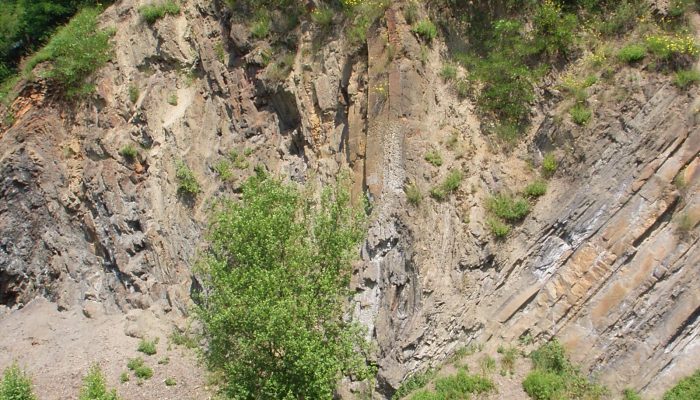During the upper Carboniferous period (Namurian, Westfalian and Stephanian) large areas of central western Germany were covered by coastal swamp forests dominated by Lepidodendron und Sigillaria. Periodic marine and fluvial transgressions caused the swamps being regularly buried by siliciclastic material, resulting in up to 5500 m thick successions of alternating organic-rich and clastic-rich sed ...[Read More]
Mining the Carboniferous in the Ruhr area (Germany)

Deltaic clastic-rich deposits of the Namurian B, which are found to be rich in large Carboniferous flying insects, such as Homoioptera vorhallensis (maximum length of 70 cm) (location: Hagen, Germany).
